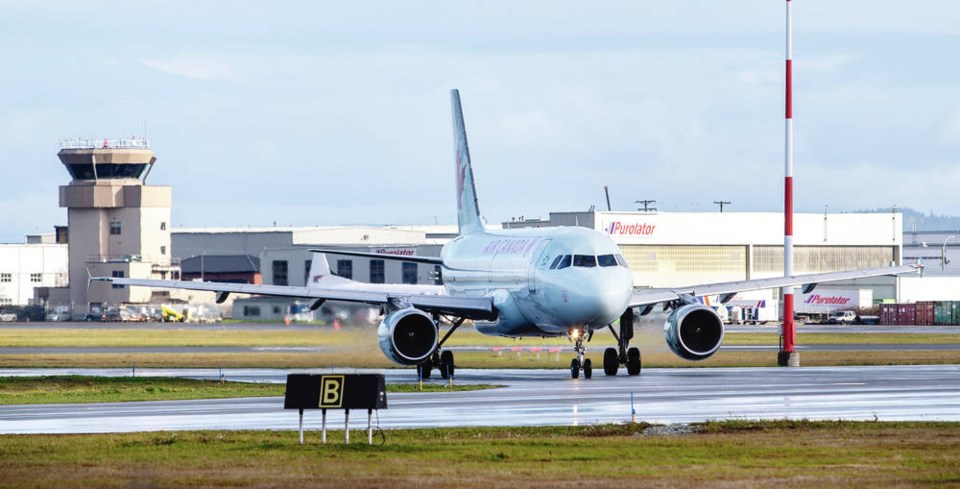Only six flights are expected to arrive and depart over a 12-hour period today at Victoria International Airport. Four other scheduled flights were cancelled, likely because of low passenger counts that wouldn’t even cover the costs of starting a jet.
There are no international flights and certainly nothing flying south to vacation hot spots as in previous years, when there were as many as 100 flights a day to and from destinations across Canada and into the U.S. and Mexico.
Amid the pandemic, this is a typical weekend at YYJ, as public health orders continue to crush air travel and suffocate one of the region’s major economic drivers.
Passenger traffic declined sharply in 2020, sliding 70% per cent from the year before, according to the Victoria Airport Authority. The 590,076 passengers who passed through the terminal last year represent a precipitous drop from the 1.924 million in 2019 and the record 2.04 million in 2018.
Authority chief executive Geoff Dickson said since 90% of the revenue generated at the airport is tied to passenger traffic and aircraft activity, the effect on revenue has been severe. “It’s been astonishing,” Dickson said Friday. “It’s a struggle.”
In its year-end report, the airport authority said revenue for 2020 was down 55% from 2019, at $17.5 million — and it would have been worse if not for two normal months at the beginning of the year and the benefit of the Canada Emergency Wage Subsidy, which was treated as revenue.
Landing fees, terminal fees and airport improvement fees were all squeezed, and contracts with restaurants, retail, car rentals, parking and ground transportation were either renegotiated or moved to percentage rent, where rent is based on the tenant’s gross income rather than a fixed amount.
The authority said the only stable stream of revenue was rent from various aviation-related businesses on Victoria airport lands.
Overall, net income for the airport authority has gone from a surplus of $9.2 million in 2019 to a loss of $7.5 million in 2020, even though the airport trimmed operating expenses by 25% during the year. The authority said in its report that YYJ is vital to the economic health of the region, and it’s critical that safe air travel restarts quickly to put YYJ in a position “to continue to drive growth for southern Vancouver Island.”
Dickson said Victoria is involved with other airports in discussions with the federal government on relief measures, including the indefinite suspension of the rent Ottawa charges airports, and on restoring confidence in air travel by funding “consistent” COVID-19 testing to reduce quarantine times.
In late November, Finance Minister Chrystia Freeland announced plans to eliminate rent for airports the size of YYJ for one year, which is expected to save the airport about $350,000.
Dickson said the airport authority would like to see its rent requirements waived either in perpetuity or at least until passenger traffic is restored to 2019 levels, which it anticipates won’t happen until at least 2024.
As for COVID-19 testing, Dickson said in his report that a patchwork of travel restrictions and health-safety measures across provinces has created confusion. Rapid testing, along with vaccines, would eliminate the need for quarantine periods and increase confidence for everyone, he said, “knowing that anyone in an airport or on a flight tested negative.”
In ongoing discussions with Ottawa, airports have raised proposals such as interest-free loans or direct operational support for airports and a new stream of funding for safety and security-related infrastructure.
But Dickson said a national approach to COVID‑19 rapid testing of air travellers to reduce or eliminate 14-day quarantines is key to restoring confidence in air travel. He noted that COVID-19 exposures have been reported on less than 1% of domestic flights.
dkloster@timescolonist.com



